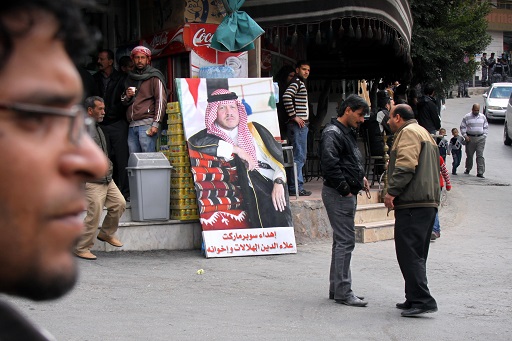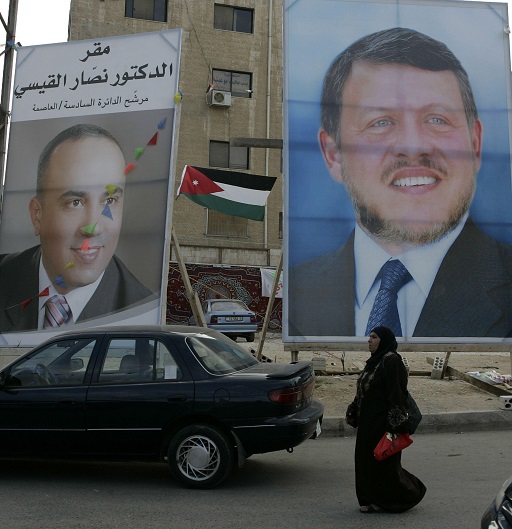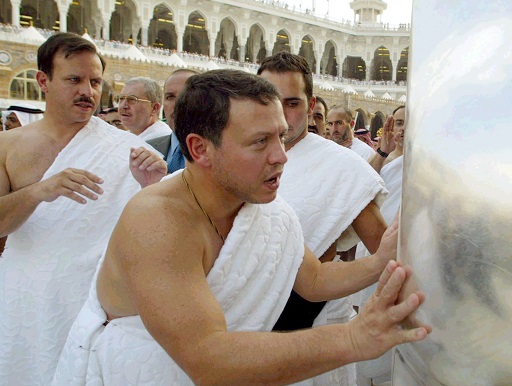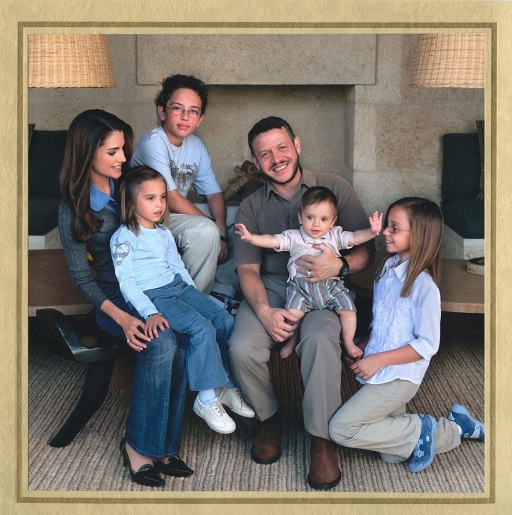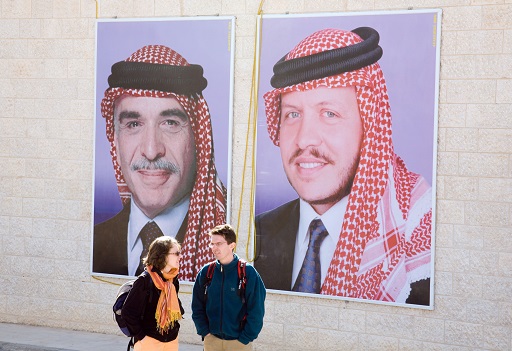2 King Abdullah II of Jordan
Abdullah II bin Al-Hussein became king of Jordan, in the Middle East, in 1999, after the death of his father, Hussein. King Hussein had been an exceptionally popular leader, and Abdullah clearly had very large shoes to fill. Jordan is a constitutional monarchy, meaning that the king’s powers are limited by a constitution, but while the king has a great deal of power, he is also very keen to appeal to his subjects. As a result of both these things, Abdullah has developed a public image that involves portraying himself in an array of different guises. In this context, clothing plays a key role.
Activity 1
Have a look at the following images of King Abdullah II, also paying attention to the information in the captions. Then fill in the table below with key details with a row for each image: note form is fine. The first one has been done for you.
| Figure number | Description of image, especially clothing | Location of image (if known) | What is the image trying to convey/who might it especially appeal to? |
| 5 | The king in military uniform with lots of medals, in front of a Jordanian flag | Outside a military installation | The king as soldier and military commander. Serious face. Looks like someone who is militarily capable/experienced and willing to lead from the front in the event of war. Likely to appeal to military personnel (‘I am one of you’) as well as citizens wanting to know their country is in safe hands. |
| 6 | |||
| 7 | |||
| 8 | |||
| 9 | |||
| 10 |
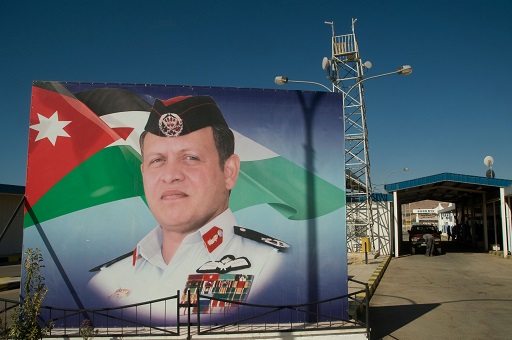
Study note: Bedouins
Bedouins are nomadic people who are the traditional inhabitants of large parts of the Middle East. In Jordan most live in the south of the country. Their traditional lifestyle includes herding sheep and goats, living in large tents and distinctive dress, which for men includes a red-and-white headscarf held down with a black band. The Bedouins of Jordan see King Abdullah as their leader.
Comment
This table may look different from yours: perhaps you spotted fewer details, or perhaps you spotted more!
| Figure number | Description of image, esp. dress | Location of image (if known) | What is the image trying to convey? Who might it especially appeal to? |
| 5 | The king in military uniform with lots of medals, in front of a Jordanian flag | Outside a military installation | The king as soldier and military commander. Serious face. Looks like someone who is militarily capable/experienced and willing to lead from the front in the event of war. Likely to appeal to military personnel (‘I am one of you’) as well as citizens wanting to know their country is in safe hands. |
| 6 | Traditional Bedouin dress | Outside a bazaar in southern Jordan | The king as Bedouin leader. Likely to appeal to Bedouin locals. (Also, he is leaning against a pile of cushions of the kind sold in Jordanian bazaars, so this might appeal to tradespeople working in the bazaar?) |
| 7 | Business suit | Commercial centre of Amman | The king as capable businessman. Likely to appeal to Jordanian businesspeople, businesspeople visiting Jordan and Jordanian citizens who place importance on Jordan’s commercial success. All of these people are likely to predominantly operate in central Amman. |
| 8 | Rida and izar of pilgrims | Mecca (Muslim pilgrimage site) | The king as pious Muslim. Likely to appeal to devout Muslims and those who want their leader to be a religious man. |
| 9 | Casual clothes | Family home | The king as family man. Likely to appeal to ordinary people, people who place importance on family and those who feel their leader should be a loving family man. Also: the king is supplying male children to take his place, so he is securing the dynasty and, as a result, the stability of the country. |
| 10 | Bedouin clothes | Petra, southern Jordan | Bedouin dress likely to appeal to local people, but worn with a suit to appeal to non-Bedouins as well? Also: portrayed next to Hussein. Abdullah benefitting from his connection to his father, who was popular and well-loved. This is also maybe showing political stability/continuity and family honour. |
Hopefully this brief discussion has shown how, even today, imagery can be key to a political leader’s public relations and how a prominent figure such as a king can use different forms of carefully chosen imagery to enhance their appeal with their people. Hopefully you also saw how clothing can play a key role here. Clearly, there are many differences between King Abdullah and Augustus: ancient Rome and modern Jordan are two entirely different types of state with very different cultures, different dress codes and different possibilities for portrait production. (As you will discover later in this course, ancient Romans could use coins, statues and a range of other options for portraits.) However, the decisions King Abdullah of Jordan has made in his image construction provide us with a more modern example of the visual framework constructed by Augustus as we turn back to Augustus and his use of portraits for political ends.


